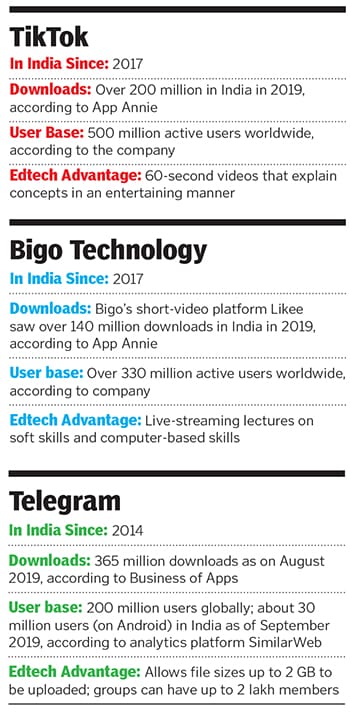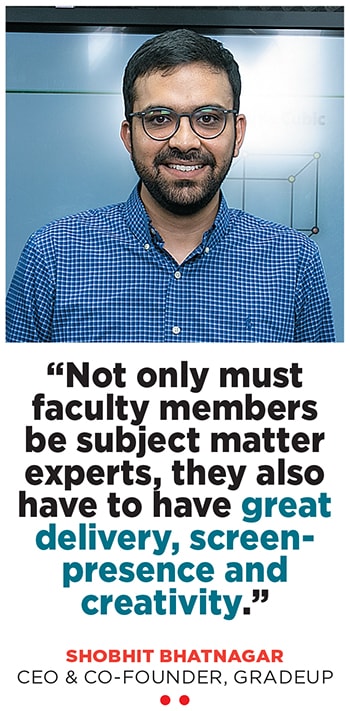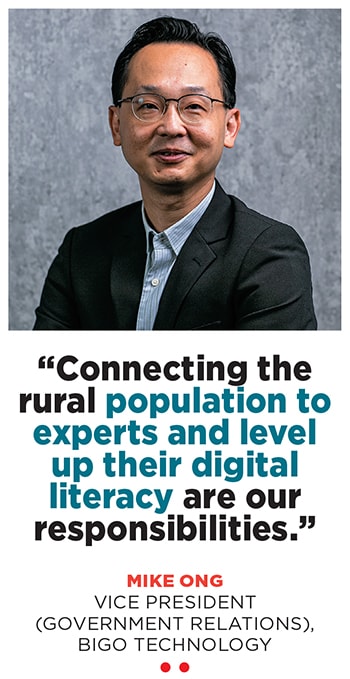When TikTok becomes your teacher
Students are using apps like TikTok, Telegram and Bigo Live to learn through snappy videos and interactive quizzes. But what is fun might not always be functional
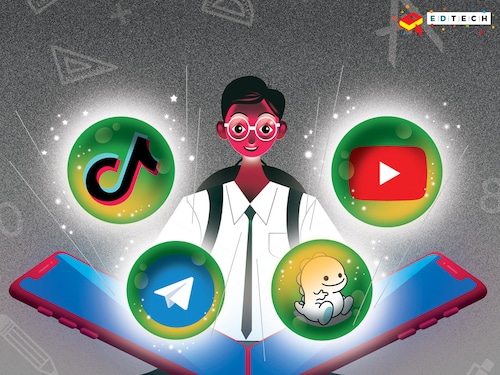

 Illustration: Chaitanya Dinesh Surpur[br]That’s a corolla? Where is a flower’s calyx? If these terms take you back to diagrams in textbooks, you must be older than 25.
Illustration: Chaitanya Dinesh Surpur[br]That’s a corolla? Where is a flower’s calyx? If these terms take you back to diagrams in textbooks, you must be older than 25.
Chances are your biology teacher was syllabus-focussed and maybe even boring. Chances also are that your teacher was not dressed à la Shah Rukh Khan in the 2000 film Mohabbatein as part of an elaborate video setup, to teach you what a corolla is in a 60-second video on TikTok.
But Ashhar Firdausi, a biology teacher, is part of a new breed of educators who is also part-actor. In one video, he is against a lush-green backdrop, with a Khan-style sweater over his shoulders, holding a single red rose. He appears deeply engaged in peeling back one petal at a time, to conclue if “she loves me” or “she loves me not”. Once he’s got your attention, Firdausi holds up the rose and points out the flower’s corolla (and its calyx), as digital graphics of autumn leaves drift across the screen (in a nod to the film, of course).
In another video, Firdausi is inside what looks like the sea, with computer-generated images of fish swimming around. How do you tell if a fish has bones or cartilages by just looking at it? Firdausi explains with the help of animation, in just under a minute.
Firdausi is an associate professor at edtech company Toppr, which has a learning app for students from classes 5 to 12 and multiple entrance exams. In June, social media platform TikTok—owned by Chinese internet giant ByteDance and famous for its short videos—rolled out #EduTok, an e-learning programme for India, for which it has edtech partners such as Toppr.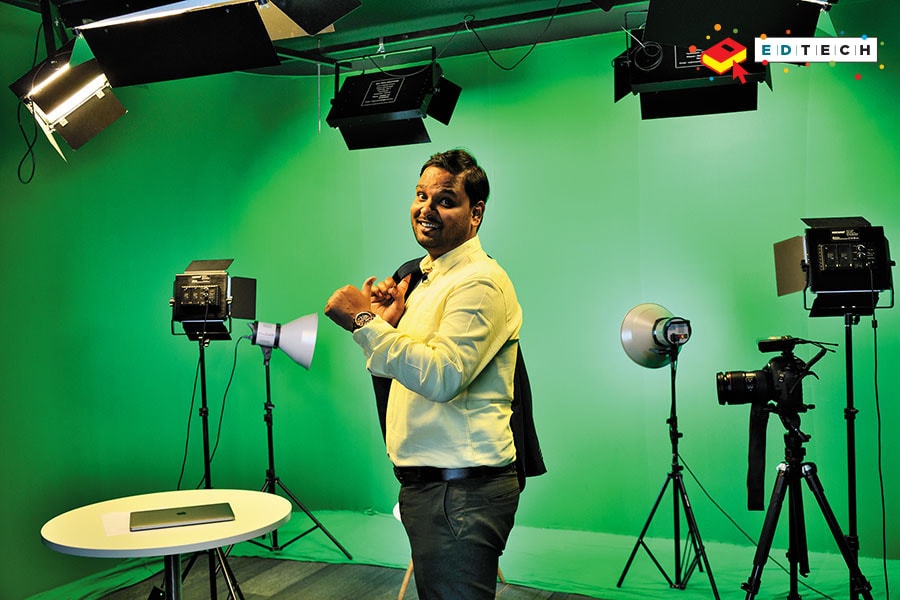 Ashhar Firdausi enacts one of his videos for Toppr
Ashhar Firdausi enacts one of his videos for Toppr
Image: P Anil Kumar for Forbes India[br] This came after the Madras High Court banned TikTok in April 2019, claiming it spread child pornography. India is one of TikTok’s largest markets, and the platform has been actively working on cleaning up its image, though the ban was soon lifted.
For instance, Jyoti Tomar, 27, has a master’s degree in computer science from the University of Bhopal. When her family did not let her relocate to Pune for a job, she started teaching at a coaching class at her hometown Laxmi Nagar, in Uttar Pradesh. She then quit to prepare for the banking services entrance exam. Instead of signing up at a coaching centre, she registered herself on edtech platform Gradeup (an #EduTok partner), which offers her “short, to-the-point content without ads, unlike YouTube”. She also joined TikTok to prepare for her test. “The exam includes logical reasoning, quantitative analysis and English vocabulary. The study material on Gradeup and TikTok is tailored for that,” she explains. While Gradeup offers quizzes, Tomar also found tips and tricks to solve math problems quickly on TikTok.
“Being on TikTok does not require heavy concentration and the interactive format is such that we can learn at any time, even when we are travelling. Every day, I get to learn at least seven to eight new words of English vocabulary,” she says.
Tomar believes that given the information overload and various distractions, edtech apps streamline education, while platforms like TikTok add an element of fun. “If we are moving toward 5G in telecom, why stick to just books in education? We have to speed up there too.”
For an entire generation of students, studying is becoming less about textbooks and more about smartphones. India’s online education market is set to grow to $1.96 billion with around 9.6 million users in 2021, up from $247 million and about 1.6 million users in 2016, according to Online Education in India: 2021, a report by KPMG in India, and Google.
To keep students hooked on to their respective platforms, education providers are experimenting with test prep and lessons on social media channels—not just TikTok, but also platforms like Telegram and Bigo Live—that host snappy videos, bite-sized formats, real-time online group studies, interactive quizzes and live streaming. This is a step further from long videos or image-based learning that were popular on YouTube and Facebook respectively. This is edtech 2.0, if you will.These digital platforms have millions of users in India, with education content creators having hundreds of thousands of followers. Telegram, the UK-based encrypted messaging app founded in 2013, has about 30 million active users (on Android) in India as of September 2019, according to analytics platform SimilarWeb. India accounted for 44 percent, or 323 million, of TikTok’s app downloads in 2019, according to data analytics firm App Annie.
Education vs Engagement
For a generation hooked to content, how do you strike a balance between education and entertainment?
“It’s evolving and we’re figuring it out,” says Shobhit Bhatnagar, CEO and co-founder of Gradeup. “Not only must faculty members be subject matter experts, but they also have to have great delivery, screen-presence and creativity.”
Teachers go through the equivalent of auditions at the time of hiring, giving demonstrative recorded lectures. “We’re working on building technology to help us here too,” adds Bhatnagar. “For example, the system should be able to quantify certain paramenters: The number of times eye-contact is made how many times teachers ask interactive questions like ‘Samajh aaya?’ [Do you understand?]”
“The difference here is that in a regular classroom, students have to stick around. Here, if they lose interest, they will open another tab, and head to another distraction,” he adds.
To make sure they maintain the balance between education and engagement, edtech startups are investing in full-stack studios, equipment and media trainers, who have experience with TV shows and news.
Arshad Shahid, creative head of Toppr says a lot of their success is credited to this media team. It took them over two to three months of trial and error to understand what really clicks with students: Videos that explain concepts with informal language, interactive graphics, and references to films and pop culture. “Earlier, we would spend 2 hours for one video. Now, after the script is ready, we can shoot within 15 minutes,” says Shahid.According to Rajshekhar Ratrey, Toppr’s vice president, product and knowledge, the company has a team of 80 that works on videos, and a sub-section of them works on adapting them for social media.
“It is competitive and creates a lot of pressure on teachers. The media trainers see how teachers are performing on camera and train them on how to act, how to engage and create interaction,” says Bhatnagar, whose Gradeup has four TikTok channels and eight Telegram groups, each with 10,000 to 15,000 followers.
Bhopal-based Pushpendra Dhakad, who runs a coaching class called Fly High Academy, doesn’t have as sophisticated a set-up, but has 2 million likes on TikTok, and more than 350,000 followers. He is an #EduTok creator, but his target audience is not just students. “I signed up on TikTok to take educational content farther. Homemakers, security guards, vegetable vendors, shopkeepers watch my videos, and I want to teach them basic, conversational English,” he says. “I teach common English phrases, pronunciation, the difference between American and British English, and so on.”
Similarly, Singapore-based live-streaming network Bigo Live, made a $100 million investment in India last year, and is focussed on India’s rural communities. “Last year, we hired over 200 qualified teachers who were able to teach English and soft skills such as Excel, PowerPoint and elementary Photoshop,” says Mike Ong, vice president (government relations), Bigo Technology. “We have significantly grown our strength in India from 200-odd employees last year to 1,000 now.”Bigo Live works via live streaming classes, which users can log into from their smartphones. “They can interact with teachers in real-time and ask questions. This simplifies the distance-learning process,” adds Ong. “Connecting this population to experts and level up their digital literacy—how to navigate the internet, how to seek important information, how to learn—is our responsibility.”
Baby Steps
The first wave of e-learning took off with YouTube and Facebook, where viewers watched long-form videos. In this next generation, the focus is on real-time, short-form and condensed learning. However, experts say that while such tools can aid in driving engagement and delivering single concepts, for in-depth learning, long formats works better.
This where Telegram has gained ground. It works and looks much like WhatsApp. However, a Telegram ‘group’ can have up to 2 lakh members, whereas WhatsApp groups can have 256 members at most. Telegram also has quick file-sharing features so that files don’t need to be downloaded and can be accessed from the cloud. Edtech companies are seeing reams of textbooks and answer sheets digitised—and often pirated—on Telegram groups.
“The way we look at it, you can’t stop the piracy,” says Abhishek Patil, co-founder, Oliveboard, an online platform for entrance exam preparation, with 6 million registered users. “So instead, we’re working on building our own presence on Telegram, creating videos and e-books. We see that a large section of students is using Telegram specifically to study, versus TikTok, which is a mix of entertainment and education.”
Hadia Khan, 19, a biotech student at Allahabad University, is one such student. “On Telegram, each group has more than 15,000 members, so there are a few hundred active users at any given point,” she says. “If I get stuck at a particular question, I can post my query and someone will help me out in real-time. It’s like group study, but online.”
Khan signed up for an annual Oliveboard subscription since it is cheaper than coaching classes. “I realised that on Facebook groups, there are many trolls and irrelevant comments,” she says. “But on Telegram, there’s almost no spamming, and the administators are quick to delete anything unfit.”Coaching classes are beginning to see the opportunity too. Praveen Tyagi, an industry veteran who has run PACE IIT & Medical and PACE junior colleges for decades, launched an interactive learning tool, Stepapp, last December by investing ₹200 crore to build it.
Stepapp gamifies the learning process for math and science from classes 6 to 12 in the CBSE and ICSE curricula students can earn virtual currency and real scholarships too. Parents can get real-time reports of their progress. “I’ve been working on it for 10 years,” Tyagi says.
“With children, we’ve long believed that they can either play or study. Here, they can do both. You’ll have concise concepts at your fingertips and a revision bank, all while feeling like you are playing a game.”
Stepapp, like Oliveboard, uses TikTok and Instagram as marketing tools to draw students to their apps. For Toppr and Gradeup, too, the function of the social media channels is to build branding and visibility, to go where the students are and incentivise them to come to the main platform.
“Relative to Facebook and YouTube, these platforms are still in the early stages in terms of getting actual outcomes,” says Bhatnagar. “We still haven’t learnt enough about them to make big investments, so just about 3 to 5 percent of our marketing budget is allocated here. Most of this is to understand what kind of users we can acquire and what return on investments we are getting. As our learning and the quality of data we can get from these platforms as advertisers rise, so will our focus here.”
Facebook and YouTube continue to lead the charge in edtech, but newer players are seeking alternative avenues. “On YouTube, students can get MIT lectures free of cost too… why would they come to me?” asks Tyagi. “That’s why we didn’t want to get into that space, and instead, build our own.”
Fast forward
Will we see a world in which students no longer need to go to physical classrooms?
“There are many things that technology cannot do. A student’s writing skills can’t be improved remotely, and technology cannot shape his or her personality,” says Tyagi. “However, there’s a lot that can be done with technology, and we can’t ignore that.”
“When the internet was first adopted, there was a hue and cry about it replacing books,” says Narayan Ramaswamy, partner and head-education, KPMG in India. “Even at work, many things are discussed on Telegram, WhatsApp or Facebook groups. You can’t rely on the internet for entirely factual information, but you cannot do without it. Similarly, social media is a part of the student’s life, and if we want to proactively engage with them, we need to be present on social media too.”
If the platforms lead to productive learning, there’s no harm, Ramaswamy adds. “Individual students can find the most effective processes for their learning. We should not control these things. However, colleges or education providers should not rely on them too much, else their offering will become diluted.”
First Published: Feb 17, 2020, 11:42
Subscribe Now